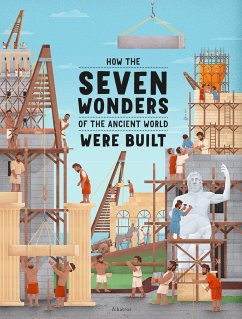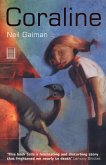We admire the ancient wonders today, but somebody had to build them. No heavy machinery, no semitrucks, no cement mixers. How was it even possible to build such wonders as pyramids and temples in ancient times?
Each one of the seven wonders of the world is unique, their beauty and magnificence has been lauded by the greatest poets and writers of the ages. In How the Seven Wonders of the Ancient World Were Built, you'll learn about the techniques and tools used to build them, what it was like to be there during the construction of them, and more!
We'll touch on each of the seven wonders of the world:
The Colossus of RhodesThe majestic Great Pyramids of GizaThe Lighthouse of Alexandria (which withstood earthquakes and gales)The spellbinding Statue of Zeus at OlympiaThe breathtaking Temple of Artemis in EphesusThe Mausoleum at HalicarnassusAnd the Hanging Gardens of Babylon (inspiration for so many myths and legends).
Come with us as we go back in time and learn the secrets of how these gems of ancient architecture were created!
Each one of the seven wonders of the world is unique, their beauty and magnificence has been lauded by the greatest poets and writers of the ages. In How the Seven Wonders of the Ancient World Were Built, you'll learn about the techniques and tools used to build them, what it was like to be there during the construction of them, and more!
We'll touch on each of the seven wonders of the world:
The Colossus of RhodesThe majestic Great Pyramids of GizaThe Lighthouse of Alexandria (which withstood earthquakes and gales)The spellbinding Statue of Zeus at OlympiaThe breathtaking Temple of Artemis in EphesusThe Mausoleum at HalicarnassusAnd the Hanging Gardens of Babylon (inspiration for so many myths and legends).
Come with us as we go back in time and learn the secrets of how these gems of ancient architecture were created!
"Gr 4-6--Readers who enjoy browsable nonfiction will likely find this book appealing. A brief introduction explains why there are seven wonders, suggests that there is still much we don't know about them, and compares the size of each to the Eiffel Tower. The book then focuses on each site in turn: the Pyramids of Giza, the Hanging Gardens of Babylon, the Statue of Zeus at Olympia, the Temple of Artemis at Ephesus, the Mausoleum of Halicarnassus, the Colossus of Rhodes, and Pharos of Alexandria. For each, there are brief blocks of text that discuss major topics for the structure. For example, when discussing the Pyramids of Giza, there are paragraphs entitled "Land of the Nile," "The Pharoah's Architect, "Pyramid Cross-Section, and "Materials." There are also many illustrations, including maps and renderings of the wonder while artisans were working on it and after they completed it. While there is no connected narrative of the building of each place and no back matter with additional material, readers will learn some interesting facts and statistics. VERDICT A browsable introduction to the Seven Wonders of the Ancient World that might well be used to raise questions such as: What might be considered today's wonders? Why do people create such huge projects? Is it a good idea?" -Myra Zarnowski, School Library Journal, City Univ. of NY
"If you have ever wondered how some of the grandest buildings were built in ancient times, then this book is for you. In a time when it seemed people were less civilized and had the least amount of technology, they were able to construct grand buildings that still stand today. This book covers the great story and architecture of several ancient wonders of the world. It tells were each one was constructed and how, as well as why. I found this book incredibly interesting! My favorite wonder of the world is the Great Pyramids. The Great Pyramids of Giza were built by a town of workers, over 20,000 to be exact! I would love to visit there someday. This book has colorful illustrations that show the construction of each wonder. This helped me to imagine what it would've been like when they were created. This is a great book and I highly recommend it!" Kids' Book Buzz, Liam - Age 10
"I loved this cool book! It's like diving into history. Each page has little snippets of information that are easy to read. I love the design of the pages, and the beautiful artwork. I found it really interesting to learn that many of the workers were not actually slaves, but respected stonemasons and artisans. It's really neat to learn about the rulers and how they got the money to pay for these huge construction projects. Every culture is so different and unique. Their religious fervor, or political power, or love for their queen drove them to pour their efforts and fortunes into a big temple or statue or garden. The writing and the art really capture your attention, and every page is so colorful and attractive!" Luminous Libro
"Wow this book is so great and so informative! The illustrations are really amazing, and all of the building and history information is so cool. I didn't even know half of that stuff myself. My son loved it!" Ashley G, Reviewer
"Very commendable book for educating young classicists. [...] A strong four stars." John Lloyd, Reviewer
"A fantastic and colorful children's non-fiction book filled with many fantastic facts! This book was read with my 7-year-old, and he marveled at the illustrations and the captions. He (and I!) both learned many new things, and the tone of the book and text is perfect for an audience of his age." Steph M, Reviewer
"How the Seven Wonders of the Ancient World Were Built by Ludmila Henkova is a beautiful picture book for inquisitive minds. With gorgeous illustrations and corresponding facts, this book brings the historical wonders alive. I think little learners will adore this book and find it supplements what they learn in history class. Great book overall. I received a digital copy of this book from the publisher with no obligations. These opinions are entirely my own." Michelle C, Reviewer
"If [...] you have young readers in your life who are curious about the ancient world, How the Wonders of the World Were Built provides a lovely visual and narrative tour of the seven monuments, aka "the seven wonders of the world." The book opens with a perspective-generating introduction that prompts readers to think about creative impulse and execution. Accompanying illustrations bring readers from the ancient world into the present. Each of the seven entries provides information about the monument's history and construction. Visual images supplement the narrative with macro and micro perspectives, including maps, depictions of the monument at various stages of completion, and annotated details.Especially impressive is how the voice strives to speak not only from the present but also from within the ancient world, providing young readers an opportunity to empathize with a human impulse to be remembered through creative acts. The art design's strong lines and vibrant colors capture the narrative's enthusiasm and poignancy." Eirini A, Educator
"If you have ever wondered how some of the grandest buildings were built in ancient times, then this book is for you. In a time when it seemed people were less civilized and had the least amount of technology, they were able to construct grand buildings that still stand today. This book covers the great story and architecture of several ancient wonders of the world. It tells were each one was constructed and how, as well as why. I found this book incredibly interesting! My favorite wonder of the world is the Great Pyramids. The Great Pyramids of Giza were built by a town of workers, over 20,000 to be exact! I would love to visit there someday. This book has colorful illustrations that show the construction of each wonder. This helped me to imagine what it would've been like when they were created. This is a great book and I highly recommend it!" Kids' Book Buzz, Liam - Age 10
"I loved this cool book! It's like diving into history. Each page has little snippets of information that are easy to read. I love the design of the pages, and the beautiful artwork. I found it really interesting to learn that many of the workers were not actually slaves, but respected stonemasons and artisans. It's really neat to learn about the rulers and how they got the money to pay for these huge construction projects. Every culture is so different and unique. Their religious fervor, or political power, or love for their queen drove them to pour their efforts and fortunes into a big temple or statue or garden. The writing and the art really capture your attention, and every page is so colorful and attractive!" Luminous Libro
"Wow this book is so great and so informative! The illustrations are really amazing, and all of the building and history information is so cool. I didn't even know half of that stuff myself. My son loved it!" Ashley G, Reviewer
"Very commendable book for educating young classicists. [...] A strong four stars." John Lloyd, Reviewer
"A fantastic and colorful children's non-fiction book filled with many fantastic facts! This book was read with my 7-year-old, and he marveled at the illustrations and the captions. He (and I!) both learned many new things, and the tone of the book and text is perfect for an audience of his age." Steph M, Reviewer
"How the Seven Wonders of the Ancient World Were Built by Ludmila Henkova is a beautiful picture book for inquisitive minds. With gorgeous illustrations and corresponding facts, this book brings the historical wonders alive. I think little learners will adore this book and find it supplements what they learn in history class. Great book overall. I received a digital copy of this book from the publisher with no obligations. These opinions are entirely my own." Michelle C, Reviewer
"If [...] you have young readers in your life who are curious about the ancient world, How the Wonders of the World Were Built provides a lovely visual and narrative tour of the seven monuments, aka "the seven wonders of the world." The book opens with a perspective-generating introduction that prompts readers to think about creative impulse and execution. Accompanying illustrations bring readers from the ancient world into the present. Each of the seven entries provides information about the monument's history and construction. Visual images supplement the narrative with macro and micro perspectives, including maps, depictions of the monument at various stages of completion, and annotated details.Especially impressive is how the voice strives to speak not only from the present but also from within the ancient world, providing young readers an opportunity to empathize with a human impulse to be remembered through creative acts. The art design's strong lines and vibrant colors capture the narrative's enthusiasm and poignancy." Eirini A, Educator








